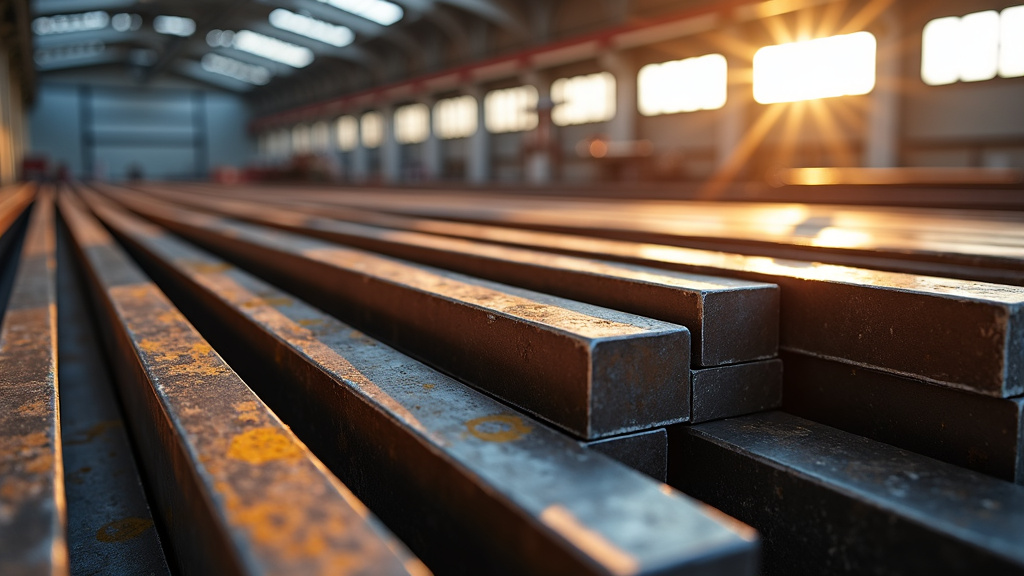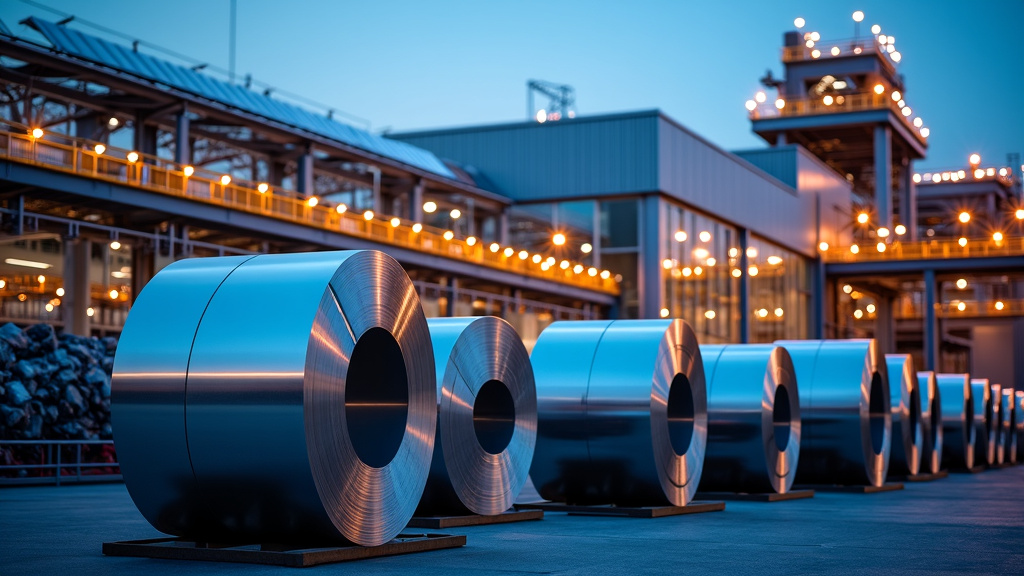5901 Botham Jean Blvd, Dallas, TX 75215
Exploring Steel Prices: How Much is Steel Per Pound?
April 9, 2025Have you ever considered the hidden value in the steel structures around us every day? From the skyscrapers that shape our cityscapes to the vehicles we drive, steel plays a crucial role in modern life. But how much is steel per pound, and what factors influence its price? This question opens up a complex world of market dynamics, quality considerations, and economic forces that shape the steel industry.
Steel prices fluctuate constantly, influenced by numerous factors that make predicting its value challenging. Whether you’re a contractor budgeting for your next big project or a homeowner considering selling scrap metal, understanding the intricacies of steel pricing is essential.
In this article, we’ll explore the key elements that determine how much steel costs per pound, empowering you to make informed decisions in an ever-changing market.
Current Market Rates for Steel

Understanding steel prices is crucial for both sellers and buyers in the recycling market. Currently, scrap steel prices range from $0.10 to $0.50 per pound. However, these figures can vary significantly due to several key factors, making it essential to stay informed about market trends.
The quality of steel plays a pivotal role in determining its value. Higher-grade steel, free from contaminants and with desirable alloying elements, often fetches premium prices. Conversely, lower-quality scrap might struggle to reach even the lower end of the price spectrum. Global demand is another critical factor. When industries worldwide are clamoring for steel, prices tend to surge, benefiting scrap sellers.
Economic conditions, both local and global, exert a strong influence on steel rates. During periods of economic growth, construction and manufacturing sectors often boom, driving up demand and prices for steel. Conversely, economic downturns can lead to reduced industrial activity and lower steel prices. It’s a delicate balance that savvy recyclers and steel industry professionals must constantly monitor.
Factors Influencing Steel Prices
Beyond supply and demand, several other factors contribute to the complex equation of steel pricing. Raw material costs, particularly for iron ore and coking coal, can significantly impact steel production expenses and, consequently, scrap steel values. Energy prices also play a role, as steel production is an energy-intensive process.
Trade policies and geopolitical factors shouldn’t be overlooked. Tariffs, export restrictions, or international conflicts can disrupt global steel markets, leading to price volatility.
Transportation costs are another consideration. The expense of moving steel from scrap yards to processing facilities and then to end-users can affect the final price paid for scrap. Regions with robust transportation infrastructure might see more competitive pricing due to lower logistics costs.
Staying Informed in a Dynamic Market
For those involved in the steel recycling industry, staying informed is paramount. Prices can fluctuate daily, and what was a good deal yesterday might not be competitive today. Utilizing resources like industry publications, online price trackers, and networking with other professionals can help you stay ahead of the curve.
Remember, while general price ranges provide a useful benchmark, actual prices can vary significantly based on your location, the specific type of steel, and current market conditions. Always check with multiple buyers or sellers to ensure you’re getting the best possible deal for your scrap steel.
| Region | Market Trends | Key Factors |
|---|---|---|
| Asia Pacific | Leading market with a 54.8% share in 2024 | Infrastructure development, urbanization, automotive industry |
| North America | Significant growth expected | Infrastructure investments, manufacturing resurgence, sustainability trends |
| Europe | Growth at a CAGR of 5.2% | Innovation and sustainability, automotive industry |
| Africa | Steady growth | Urbanization, construction, energy projects |
| Latin America | Growth driven by construction and energy sectors | Urbanization, automotive industry |
How to Get the Best Price for Your Steel

Maximizing the value of your steel scrap requires strategic planning and market awareness. Implementing key strategies can significantly increase your earnings from steel recycling. Here are some actionable tips to help you secure the best price for your steel.
Proper Sorting: The Foundation of Better Prices
Proper sorting is crucial for getting top dollar for your steel. Scrap yards pay premium prices for clean, well-sorted metal. By separating different types of steel and removing non-ferrous contaminants, you perform part of the recycler’s job, which they’ll appreciate—and compensate you for.
Separate stainless steel from mild steel and remove attachments like plastic or rubber. This not only increases the value of your scrap but also speeds up the transaction process at the yard. Remember, the cleaner and more organized your scrap, the higher the price you’re likely to receive.
For larger quantities, consider investing in a magnet to easily separate ferrous from non-ferrous metals. This simple tool can significantly increase your efficiency and ensure you’re getting the most value for each type of metal.
Choosing the Right Buyer: Research Pays Off
Not all scrap yards offer the same prices. Finding the right buyer can make a substantial difference in your earnings. Start by researching local scrap yards and metal recyclers in your area. Look for those with positive reviews and a reputation for fair pricing.
Don’t hesitate to call around and ask for quotes. Many scrap yards provide current prices over the phone, allowing you to compare offers and choose the best deal. Keep in mind that some buyers might specialize in certain types of steel and offer better prices for those specific grades.
Building a relationship with a reputable buyer can lead to better prices over time. Regular customers often receive preferential rates or first dibs on price increases. If you’re consistently dealing in large quantities, some buyers might even offer pickup services, saving you time and transportation costs.
Timing Your Sale: Market Awareness Matters
The scrap metal market is volatile, with prices fluctuating based on various economic factors. While it’s impossible to predict the market perfectly, staying informed about general trends can help you time your sales for maximum profit.
Keep an eye on global steel demand and production rates. When demand is high and supply is constrained, prices tend to rise. Conversely, economic downturns or oversupply situations can lead to price drops. Websites dedicated to scrap metal pricing can be valuable resources for tracking these trends.
If you have the storage capacity, consider holding onto your scrap during price dips and selling when the market recovers. However, be cautious not to hold too long, as extended storage can lead to quality degradation, especially if your scrap is exposed to the elements.
| Date | USA (USD/ton) | China (CNY/ton) | Western Europe (EUR/ton) | World Export (USD/ton) |
|---|---|---|---|---|
| March 24, 2025 | 984 | 392 | 690 | 440 |
| October 11, 2021 | 2143 | 805 | 1550 | 1275 |
| July 28, 2008 | 1203 | 733 | 1204 | 1113 |
Understanding Grade and Quality: Knowledge is Power
Not all steel scrap is created equal, and understanding the different grades can significantly impact your earnings. Familiarize yourself with common steel grades and their typical applications. For instance, high-grade stainless steel will fetch a much higher price than regular carbon steel.
Learn to identify valuable alloys and specialty steels. Tools like portable X-ray fluorescence (XRF) analyzers can help determine the exact composition of your metal, ensuring you’re not underselling high-value scrap. While these devices are expensive, some scrap yards offer testing services for a small fee, which can be worth it for large or potentially valuable loads.
Remember, the more you know about what you’re selling, the better positioned you are to negotiate fair prices. Don’t be afraid to ask questions and learn from the buyers you interact with. Their expertise can be invaluable in helping you identify and properly value your scrap.
The Future of Steel Prices: Trends and Predictions

Looking forward, several key factors will shape market trends and influence steel price trajectories. The industry is undergoing significant transformation driven by sustainability initiatives and advancements in recycling processes, which will likely impact steel prices in the coming years.
Staying informed about market trends and industry developments is crucial for making sound decisions regarding steel recycling and procurement. Okon Recycling remains committed to leading these industry shifts, leveraging expertise to provide the best value for customers.
While the future of steel prices may hold some uncertainty, the industry’s move towards sustainability and innovation offers reasons for optimism. By embracing these changes and staying informed, businesses and consumers can make informed decisions in the dynamic world of steel recycling.
To learn more about how Okon Recycling can help you navigate these trends and maximize the value of your recycling efforts, contact Okon Recycling at 214-717-4083.
